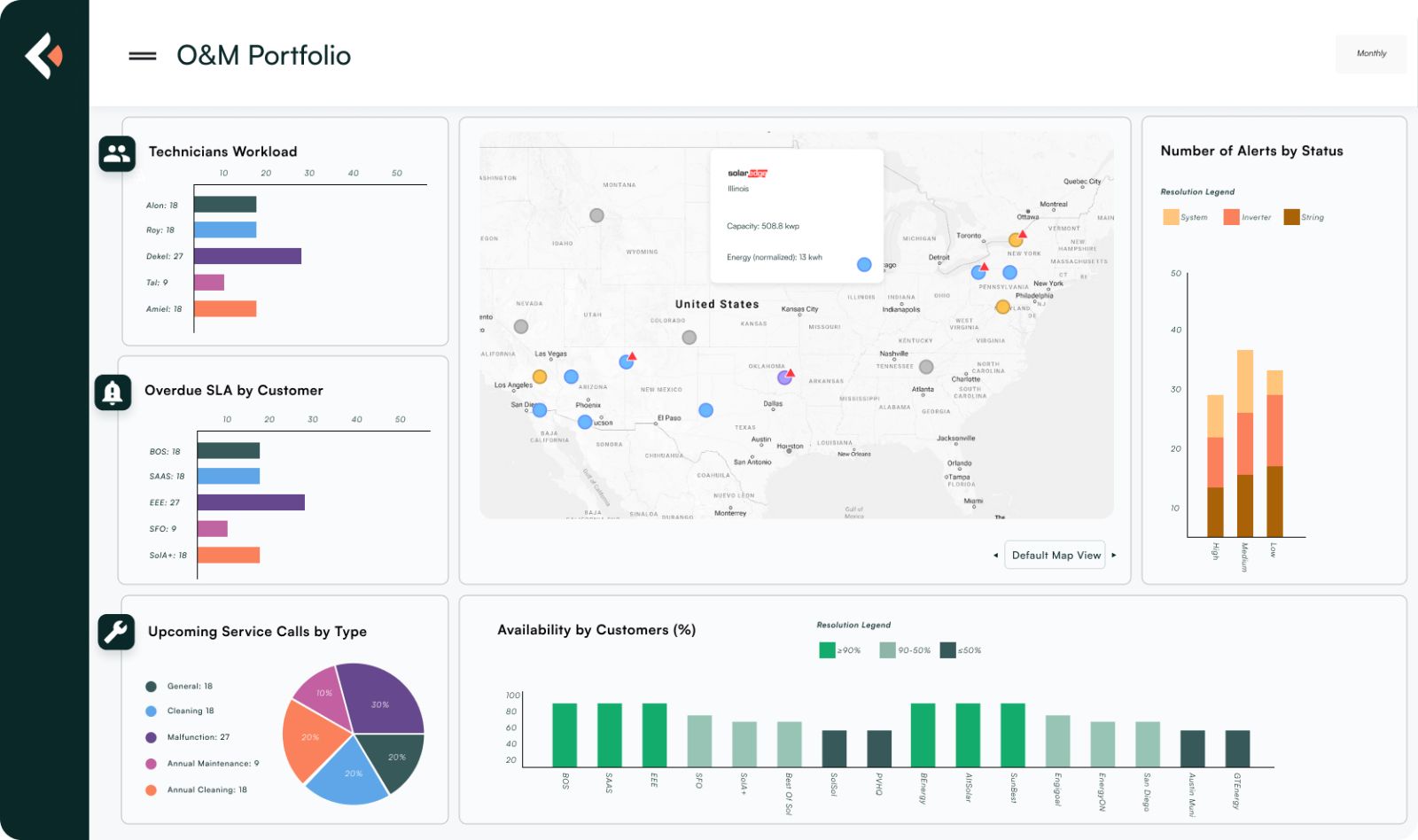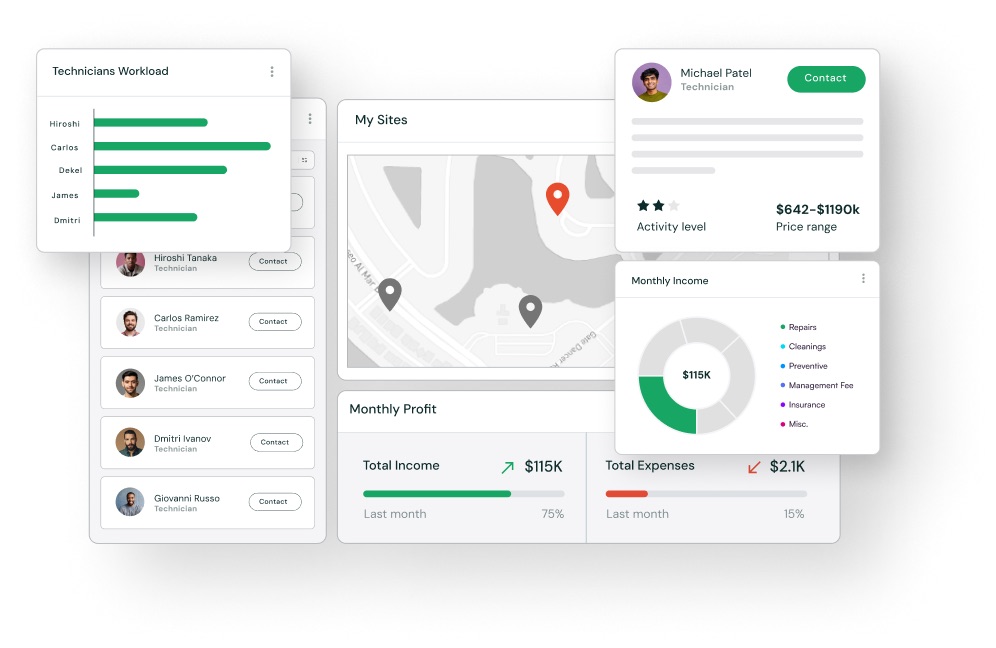Boosting O&M Productivity with Cloud Native Technology
“There's birth. There's death, and in between there's maintenance.” While Tom Robbins wrote this in Fierce Invalids Home from Hot Climates about us humans, the same sentiment can be applied to solar assets. Most of a clean energy asset’s lifetime is spent under the care of an O&M company. Day in and day out, O&M companies are tasked with ensuring that diverse energy fleets, including PV, batteries, and EV chargers, are operating at their peaks. The responsibilities of these O&M companies are becoming more complex and demanding with larger, more diversified fleets, and evolving grid compliance requirements; it’s critical that the tools that O&M companies rely upon continue to advance to support their demanding service and business needs.

O&M companies are constantly managing diverse external and internal obligations. Beyond the standard day-to-day operations of fault detection, root cause analysis, and resolution, are the longer-term obligations such as meeting SLA, performance ratio, and availability KPIs. There’s also customer satisfaction and confidence, transparency and reporting, and relationship management. These external responsibilities keep O&M companies busy enough; but they also have internal responsibilities such as organizational efficiency, cost reductions, and profit maximization — all in a thin margin business. These are the types of issues, like business productivity and efficiency, that can keep a VP of Asset Management or Operations up at night.
There are a number of tools and platforms that O&M companies can leverage to support them with many of these external responsibilities. Unfortunately, these can fall short of providing solutions for the more critical business efficiency functions, limiting their ability to be proactive. For example, the lack of data control in many platforms has a compounding effect on the productivity of O&M companies. Poor data acquisition, data fragmentation, data disorganization, and unstable data can make it difficult for multiple software solutions to communicate, leading to a lack of connectivity between business departments. This can lead to inaccurate prioritization, inefficiencies, disorganization, improper billing, and wasted time on manual tasks that should be prioritized like customized reporting and data validation. In addition, this fragmentation can cause a lack of employee oversight and miscommunication with subcontractors. Lean organizations, like O&M companies, deserve tools that not only support their core business functionalities, but also their business efficiency and growth goals.

Ecosystems can better serve the full business needs of O&M companies. Unlike legacy clean energy asset management platforms that solely focus on business output, clean energy optimization and management ecosystems are designed to support business productivity. Ecosystems tend to be cloud native as this technology inherently provides scalability, flexibility, and agility. Specifically, cloud native technology supports AI integration and extreme interconnectivity — both of which are critical for empowering O&M companies to unify and optimize their entire business, boosting efficiency and scalability.
As an example, an energy management and optimization ecosystem can analyze faults using multiple data layers on top of the standard OEM alerts (such as electrical quality parameter analysis or thermal imaging) to reduce false positives and improve the signal-to-data ratio. But it doesn’t stop there. Due to its inherent ability to integrate AI, this type of ecosystem can also provide actionable insights and recommended corrective actions. Another example of how a comprehensive ecosystem improves business productivity is its ability to manage all outputs of the full business lifecycle (CRM, ERP, CMMS, and billing features). Alternatively, its flexibility from being cloud native also supports wide and robust API compatibility for open access.
O&M companies are the lifeblood of solar energy generation. Without their continuous commitment towards improving the performance of clean energy assets, the energy transition would quickly grind to halt. Yet the needs of their own business operations have been ignored for far too long, made worse by inadequate tools that only let them access minimal feature sets (CMMS, real-time data, single-pane-of-glass views, configurable alerts, basic reporting, and agnostic data integration). These companies deserve cost-efficient ecosystems that not only help them be responsive to their customers’ needs, but also empower them to be more proactive while boosting their own business productivity. With these types of energy management and optimization ecosystems, O&M companies can be a larger beneficiary of the clean energy transition.
Alon Mashkovich, CEO & Co-founder of enSights, is an entrepreneur with more than 10 years of experience in strategic business development, operations management, energy efficiency, and renewable energy. Previously as business and energy efficiency consultant, Alon saw the challenges that his clients faced with energy management and optimization, which led him to create enSights with his co-founders. Alon is passionate about helping enterprises in their digital and clean energy transformation.
enSights | ensights.ai
Author: Alon Mashkovich
Volume: 2025 March/April













.jpg?r=6613)